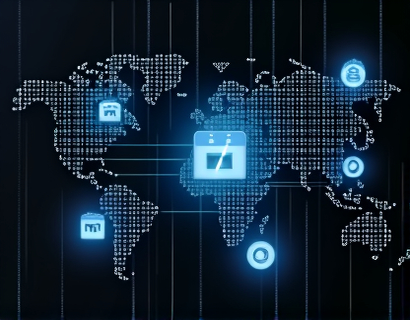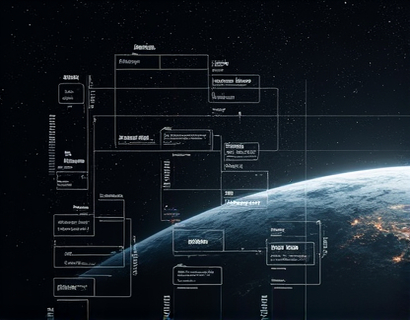Agricultural Software: Streamlining Farm Operations with Tailored Tech Solutions for Enhanced Efficiency and Productivity
In recent years, the agricultural sector has witnessed a transformative shift driven by advanced software solutions. These technologies are redefining how farming operations are managed, leading to significant improvements in efficiency and productivity. The integration of tailored tech solutions in agriculture is not just a trend but a necessity for modern farming businesses aiming to stay competitive in a rapidly evolving market.
The agricultural industry, traditionally reliant on manual processes and basic tools, is now embracing sophisticated software systems designed to streamline operations from planting to harvest. These systems offer a comprehensive suite of tools that address various aspects of farm management, including crop monitoring, resource optimization, and data analysis. By leveraging these technologies, farmers and agricultural professionals can make informed decisions, reduce costs, and increase yields.
Enhanced Data Management
One of the most significant benefits of agricultural software is the enhancement of data management. Modern farming generates vast amounts of data from various sources such as soil sensors, weather stations, and machinery. Managing this data manually is not only time-consuming but also prone to errors. Advanced software solutions provide robust data management systems that collect, store, and analyze data in real-time.
These systems enable farmers to track key metrics such as soil moisture levels, nutrient content, and crop health with precision. For instance, soil sensors can provide continuous data on soil conditions, allowing farmers to adjust irrigation and fertilization schedules accordingly. This level of detail ensures that resources are used optimally, reducing waste and improving crop yields. Moreover, the data can be historical and predictive, offering insights into trends and patterns that inform long-term planning.
Improved Decision-Making
The ability to access and analyze data in real-time significantly enhances decision-making capabilities for agricultural professionals. With comprehensive data at their fingertips, farmers can make informed choices about planting, harvesting, and resource allocation. For example, weather forecasting integrated with farm data can help in planning the best times for planting and harvesting, avoiding adverse weather conditions that could damage crops.
Decision support systems within agricultural software use algorithms and machine learning to provide recommendations based on current and historical data. These recommendations can range from optimal pesticide application rates to the best crop rotation strategies. By relying on data-driven insights, farmers can reduce the risk of human error and make more strategic decisions, ultimately leading to higher productivity and profitability.
Streamlined Operations
Agricultural software also streamlines various operational tasks, reducing the workload and increasing efficiency. Automation of routine tasks such as inventory management, equipment scheduling, and labor tracking frees up time for farmers to focus on more critical aspects of their business. For instance, automated inventory systems can track seed, fertilizer, and pesticide stocks, ensuring that supplies are always at optimal levels and reducing the risk of shortages or surpluses.
Equipment management is another area where software solutions excel. By integrating with machinery sensors, these systems can monitor the performance and maintenance needs of equipment in real-time. This proactive approach to maintenance prevents breakdowns and extends the lifespan of machinery, reducing downtime and repair costs. Additionally, scheduling tools can optimize the use of equipment, ensuring that it is utilized efficiently and effectively.
Resource Optimization
Resource optimization is a critical aspect of modern agriculture, and software solutions play a pivotal role in achieving this goal. By analyzing data on resource usage, farmers can identify areas where resources are being underutilized or wasted. For example, precision irrigation systems, controlled by agricultural software, can adjust water distribution based on real-time soil moisture data, ensuring that crops receive the exact amount of water needed without over-irrigation.
Similarly, fertilizer management software can optimize the application of nutrients by analyzing soil tests and crop requirements. This precision application not only reduces the amount of fertilizer used but also minimizes environmental impact by preventing runoff and leaching. As a result, farmers can achieve higher yields while reducing costs and adhering to sustainability standards.
Supply Chain Integration
Agricultural software extends its benefits beyond the farm by integrating with the broader supply chain. From procurement to distribution, these systems facilitate seamless communication and coordination among all stakeholders. For instance, farm management software can integrate with suppliers to automate orders for seeds, fertilizers, and other inputs based on real-time inventory levels and crop plans. This integration ensures that inputs are available when needed, reducing delays and stockouts.
Similarly, integration with distributors and retailers allows for better demand forecasting and inventory management. By sharing data on crop yields and market trends, farmers can align their production with market demands, reducing the risk of surplus or shortage. This level of integration not only improves operational efficiency but also enhances the overall resilience of the agricultural supply chain.
Environmental Sustainability
The environmental impact of agriculture is a growing concern, and software solutions are helping farmers adopt more sustainable practices. By providing detailed insights into resource usage and environmental conditions, these systems enable farmers to minimize their ecological footprint. For example, precision agriculture techniques, supported by software, can reduce the use of chemicals and water, leading to healthier soils and ecosystems.
Moreover, many agricultural software platforms offer tools for carbon footprint analysis and sustainability reporting. These tools help farmers measure and manage their environmental impact, comply with regulatory requirements, and meet the growing demand for sustainably produced food. By adopting these technologies, farmers can contribute to global efforts to combat climate change while improving their own operations.
Challenges and Considerations
While the benefits of agricultural software are clear, there are challenges and considerations that farmers and agricultural professionals must address. One of the primary challenges is the initial cost of implementing these systems. High-quality software solutions can be expensive, and not all farming operations may have the budget to invest in advanced technology. However, the long-term benefits in terms of increased efficiency and productivity often justify the investment.
Another consideration is the need for technical expertise to effectively use and maintain these systems. Farmers may require training to fully leverage the capabilities of the software. Additionally, data security and privacy are critical concerns, as sensitive farm data must be protected from unauthorized access. Reputable software providers should prioritize security measures to ensure that data is safe and compliant with relevant regulations.
Future Trends
The future of agricultural software is promising, with ongoing advancements in technology poised to further revolutionize the sector. One emerging trend is the integration of artificial intelligence (AI) and machine learning to enhance predictive analytics and automation. AI can process vast amounts of data to identify patterns and make predictions with high accuracy, further optimizing farm operations.
Another area of development is the use of drones and satellite imagery for remote monitoring of crops and fields. These technologies provide high-resolution images and data that can be integrated into farm management software, offering real-time insights into crop health and field conditions. As these technologies become more accessible and affordable, their adoption in agriculture is likely to increase.
Additionally, the Internet of Things (IoT) is playing a significant role in connecting various devices and sensors on the farm, creating a network of interconnected devices that work together to optimize operations. IoT-enabled systems can automate tasks, monitor conditions, and provide real-time alerts, further enhancing efficiency and productivity.
Conclusion
The integration of advanced software solutions in agriculture is transforming the way farming operations are managed, leading to significant improvements in efficiency, productivity, and sustainability. By leveraging tailored tech solutions, farmers and agricultural professionals can streamline processes, make informed decisions, and adapt to the challenges of a changing market. As technology continues to evolve, the agricultural sector will continue to benefit from innovative solutions that drive progress and prosperity.










































